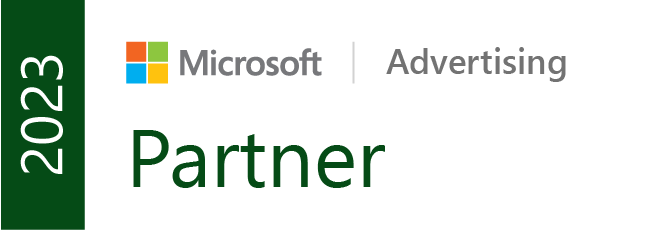
Working with Google Ads ultimately revolves around a simple goal: how to explore and expand your advertising efforts while keeping your CPA (Cost Per Acquisition) or CAC (Customer Acquisition Cost) as low as possible, or maximizing your ROI (Return on Investment) or ROAS (Return on Advertising Spend), depending on your focus.
Achieving this goal is much harder than it seems. If you break it down into a simple to-do list, it looks something like this:
📚 Research the product you want to advertise,
🎨 Prepare your creative assets,
🛠️ Prepare your technical setup,
🚀 Launch the traffic and wait for the results.
Want to brainstorm with our team on new ways to scale your business with YouTube Ads (and other performance video platforms)?
Join us for a free YouTube ad brainstorming session👇
In practice, completing even one step can be time-consuming and potentially overwhelming. Planning from all angles helps maintain momentum from idea to realization 💪.
This time, I’ve decided to share my process and knowledge on using a Google Ads resource that is often overlooked but can be a valuable leverage whether you’re launching a new offer or stuck on ideas. It is something that has allowed me to achieve better results with tools that are already at my disposal, whether I was aiming for lead generation or sales. So without further ado, let me introduce you to the world of TV device targeting 📺, a field many have heard about but few have tapped into for various reasons—technical, creative, or simply not giving it a chance.
Where to start?
The first step is understanding the type of creative you need for targeting TV devices. Essentially, it’s similar to landscape video assets. Here are some Google recommendations for landscape creative:
Resolution: 1080p (Full HD) 📹
Recommended pixels for HD: 1920 x 1080px (horizontal) 🖥️
Aspect ratio: 16:9 📐
Format: .MPG (MPEG-2 or MPEG-4) 🎞️
To enhance video performance, consider using QR codes, which enable another form of interaction with your ad. By using their mobile phones, customers can quickly scan the code and visit your URL, which is embedded in the QR code. You will learn more about how to implement this feature in the next chapter. If you’re curious about the history and technology behind QR codes, you can read more about them on Wikipedia 📖.
Use of QR code
To create a QR code, find an app that allows you to do so. If you don’t have a preferred app, I suggest the free one available at The QR Code Generator 🔧. Enter the final URL you want customers to land on after scanning the QR code.
Tracking QR codes can be tricky 🤔. You need to understand the basics of UTMs and website conversion tracking because QR scans do not provide a click ID (known as gclid, and after the iOS update, wbraid and gbraid). These are hashed values of customer information used by tracking platforms like Hyros, RedTrack, Triple Whale, Everflow, and Amplitude 📊.
To track QR code conversions, rely on the final URL information stored within the QR code. Use a UTM builder to help you out. After entering your UTM parameters, fetch your final URL, which should look something like this:

Feel free to be creative with the shape and color of the QR codes 🎨 to make them more appealing to your audience. Once complete, download the QR code and have your video editing team attach it to the creative you will use for TV device targeting.

Campaign creation 🚀
With this setup, you can track your QR performance in your backend system. Create QR codes specific to each campaign, adding more details to your UTM string for precise reporting 📝.
For campaign creation, refer to Google’s step-by-step guide 📘. Ensure you are targeting TVs only by navigating to your campaign, selecting the Insight reports -> When and Where ads showed, subtab Devices, and decreasing all other devices by 100%, making them inactive 📵.

Bidding strategy 💰
For bidding, I highly recommend the MC (Maximize Conversions) bidding due to potential issues with campaign conversion reporting, which can disrupt tCPA (Target CPA) campaigns more than MC.
Summary 🎯
In summary, whether you are aiming for leads or sales, TV device targeting is an underutilized but powerful tool for digital marketing. By understanding the technical and creative requirements, and incorporating QR codes for enhanced performance tracking, you can effectively reach your audience on TV devices. Make sure to utilize UTM parameters to track conversions and ensure precise performance insight. Good luck! 🚀📈
Want to brainstorm with our team on new ways to scale your business with YouTube Ads (and other performance video platforms)?
Join us for a free YouTube ad brainstorming session👇
Want more content like this?
Don’t miss out on the latest news and updates from the world of Direct Response advertising! Subscribe to our newsletter today 👇

Dejan Bovan, Senior Media Buyer
Having started out at Inceptly as a tracking whizz and a certified GTM, GDS, and Segment expert, Dejan then transitioned into media buying. His background and analytical mindset now help him spot and take advantage of untapped opportunities for our clients.
Like this post? Let's continue the conversation!
Get in touch with us by shooting us a quick email or tagging us on LinkedIn or Instagram, and sharing your thoughts. Your feedback helps us keep our blog relevant and interesting.
Get Our Newsletter
Need Help?
Get in touch with us for an insightful evaluation of your ads + actionable tips to help amp up your direct response revenue



